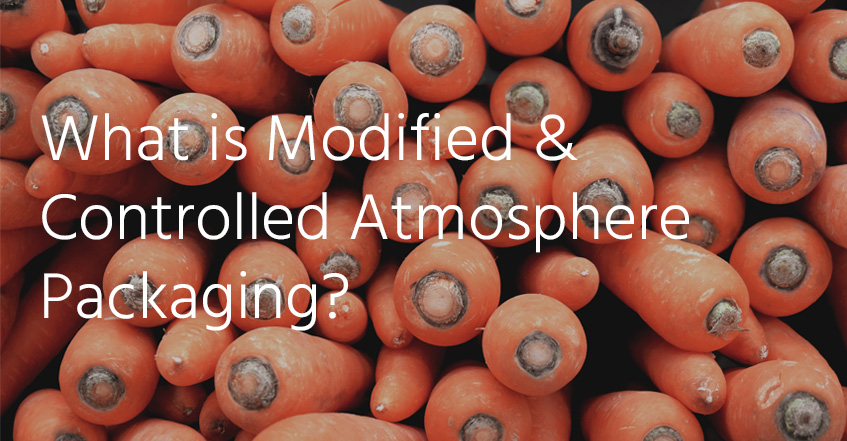The good, the bad, the oxygen
Perishable produce, fruits, vegetables, potatoes, as well as fish, meats, and more would not have a long shelf-life if left to their own devices. In fact, much of it may not even survive being transported to the shelf if not for atmospheric intervention.Oxygen in the air will affect already-picked produce by generating moisture, warmth, and even ethylene gases, causing the fruit and vegetables sitting in storage or transport to continue to ripen quickly and eventually cause decomposition, rendering the food inedible. Oxygen also exposes meats, cheese, and fish to micro-organisms in the air, causing spoilage and contamination.
So how does the food and beverage industry combat this natural O2 degradation?
Controlling oxygen with gas
In order to reduce oxygen’s affects on food in storage or display without having to resort to chemicals, freezing, dehydrating, or vacuum sealing every single item, one has to find a way to remove the oxygen from the environment that the food is surrounded by.This means either the surrounding air in storage areas for items like crops or bulk storage bins, right down to the air inside sealed packaging for products sitting on store shelves.
This is done by basically replacing the natural air in those environments with a mixture of carefully controlled gases. And while modern technology has certainly made this process much easier and far more advanced, the idea may actually date back to ancient Chinese writings1 that spoke of transporting fruit using sealed clay pots filled with grass, as a means of reducing the oxygen in the air inside the pot.
What is a Controlled Atmosphere?
Controlled Atmosphere (CA) storage is the bulk-storage of food items within a closed container or area (such as industrial refrigerators, farm silos, and shipping vehicles) in which the natural air has been replaced with an altered mixture of nitrogen, oxygen, and carbon dioxide (CO2) and is temperature-regulated.This modified mixture is carefully monitored and maintained around the clock for as long as the food is being stored in the bulk containers or environment.
Depending on the type of food being stored, the amount of each of these gases can vary widely, but more on that later.
What is Modified Atmosphere Packaging?
Modified Atmosphere Packaging (MAP) is essentially the exact same process as Controlled Atmosphere storage, the difference being that while CA is for bulk storage and the environment is continually being monitored and maintained, MAP is a one-time modification at the moment of packaging, just prior to the produce being shipped off to the market.Neither CA or MAP processes can fully stop natural decay or microbial growth, however both processes extend the shelf-life and storage lives of food significantly— as much as 50-200% depending on the food item, the permeability of the packaging (an article for another day), and stored temperature— all without adding chemicals or degrading the quality of the food by removing moisture or freezing.
The Guardian broke down a few common food items and what they go through over different periods of time from the moment of harvest until they land in your pantry or fridge. It’s a pretty interesting article, available here.
MAP: Different mixes for different food
The composition of natural air is 78% nitrogen, 21% oxygen, and 0.04% carbon dioxide (plus traces of other gases). So we know that oxygen has to be replaced in order to prolong shelf-life, but it’s far more technical than pumping in other gases and pumping out oxygen. Over time, we’ve learned that different foods benefit from different mixes, for example:For bread, it’s recommended that it be packaged with 0% oxygen, 70% CO2, and 30% nitrogen.
To package cheese, the style of cheese is actually key to prolonging freshness. Soft cheeses should have only 30% CO2 with 70% nitrogen. Hard cheese on the other hand is packaged in 100% CO2.
Poultry is 25/75, CO2 to nitrogen.
Beer, potato chips, pasta, and other dried foods are typically stored in 100% nitrogen for longest shelf-life.
As for your produce, fruits, veggies, the mix is a range (depending on the type of fruit or vegetable) of 2-5% oxygen, 3-15% carbon dioxide, and 80-97% nitrogen.
Are you in the food and beverage industry? To learn how we can serve you, call us today at 877.275.9374 or request a free gas quote on our website. Get a free CO2 or nitrogen quote from us here.
1 – Source: Handbook of Postharvest Technology: Cereals, Fruits, Vegetables, Tea and Spices by Amalendu Chakraverty, Arun S. Mujumdar, Hosahalli S. Ramaswamy

